Politics & Economy
Lessons from the Việt Nam war (Part 3)
Published on
By
Tạ Văn Tài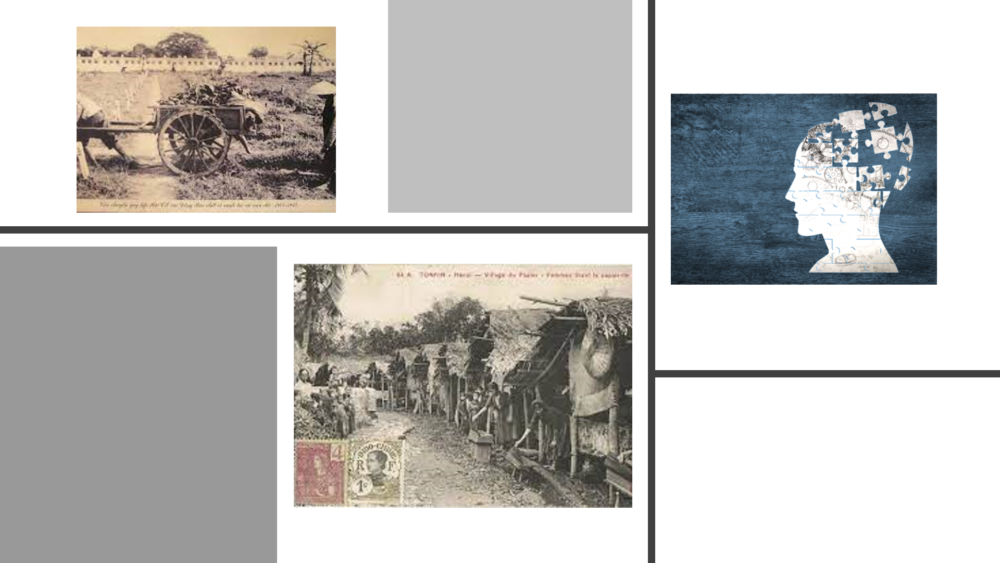
Lessons from the Việt Nam war (Part 1, Part 2, Part 3)
4. The fourth lesson: if peace is to be enduring, war should end with reconciliation.
Post-war reconciliation requires humanity, modesty and reason from all sides, including the winning side. The Communists and Nationalists should have followed the example of Nelson Mandela in South Africa on how to address the war’s aftermath and achieve reconciliation.. What might have been done?
On April 30, 2005, i.e., 30 years after the downfall of South Vietnam, I published an article on the website Talawas calling for reconciliation among Vietnamese in the spirit of and following the example of Nelson Mandela of South Africa. On December 5, 2013, the whole world mourned the passing of Mandela, the world’s model of a peaceful liberator and conciliator. Speaking to media such as the BBC, many Vietnamese wondered why Vietnam had not had the luck to adopt such a pathway to reconciliation. The Vietnamese Communists might have opened their doors to welcome back overseas Vietnamese for visits, trade and investment. They could have worked to attract experts to return to help national development. The children of high Vietnamese officials could have gone to the United States and other countries to learn about the strength of Western capitalism. Now, this is happening. (I myself heard then-Vietnamese Vice-Premier Phan Văn Khải, at a dinner thank Harvard for being the first American university to welcome Vietnamese students.) Vietnam could have adopted policies that permitted citizens to make their living freely and to keep what they earn within a market economy. These are ideas advocated by South Vietnamese expatriates.. The adoption of these ideas in Vietnam today, ideally with expatriate help, could help the overseas Vietnamese recover from the humiliation of clandestine flight and escapes by sea, and make use of the successful careers they have built in the United States and elsewhere. In this way, both sides could be said to have won.
But there is still one obstacle to reconciliation: the wounds remaining from the long years of internment in “reeducation” camps (i.e., concentration camps). The Vietnamese Communist Party, for all its success in battle, has not been enlightened or generous enough to follow Lincoln’s advice at his Second Inaugural Address on March 4, 1865, shortly before the end of the American Civil War:
“With malice toward none, with charity for all, with firmness in the right as God gives us to see the right, let us strive on to finish the work we are in, to bind up the nation’s wounds, to care for him who shall have borne the battle and for his widow and his orphan, to do all which may achieve and cherish a just and lasting peace among ourselves and with all nations.”
The result is that the overseas Vietnamese who spent years in concentration camps after 1975, and their families, cannot forget the suffering, the ruined health, the social dislocation or the painful readjustment to life after their internment that in some cases included the loss of wives and children.
Among the ordinary citizens of Vietnam, especially among relatives and friends on both sides, reconciliation has been easy; there have for some time been many cases of families reuniting after decades of living apart, full of tears and laughs, with no more estrangement. The younger generations especially, not yet born or still children when the war ended, have merged naturally with one another when overseas Vietnamese returned home, or when people have left Vietnam to go abroad for study or other reasons. Indeed, romances have sometimes developed.
But closure requires an official apology from the high officials of government responsible for the cruelty of the reeducation camps instituted in 1975. Many of these officials were in their thirties and forties in 1975, and are now in their seventies or eighties.. Only with the issuance of such an apology will the overseas Vietnamese sigh, “That’s it,” and be willing to bring their money, talent, and even their family members back to Vietnam for nation-building.
Đỗ Mười, former General Secretary of the Vietnamese Communist Party, named two policy mistakes: (a) the 1953 to 1955 land reform that violated the rule of law, according to Professor Nguyễn Mạnh Tường and others, and (b) the 1979 anti-bourgeois campaign that destroyed businesses and delayed Vietnam’s growth for a generation.
Đỗ Mười may have been the right person to make such an apology, since he towered over other leaders in age and political seniority. Other high-level Vietnamese leaders have made gestures of reconciliation. Including former North Vietnamese Public Security Minister Trần Quốc Hoàn, and the old Nationalist politician Vũ Hồng Khanh, who spent time in a reeducation camp, and who, as indicated above, had long ago helped save the life of Hồ Chí Minh by intervening in Liuzhou, China, with the Nationalist Chinese general who detained him. There are other examples of Vietnamese leaders who at times at least voiced sympathy for their political opponents.. Hồ Chí Minh, for example, said: “Ngô Đình Diệm is a patriot in his own way.” And retired Vietnamese Communist Prime Minister Võ Văn Kiệt said: “It is about time we recognize the great contribution of many strata of Vietnamese patriots living inside the old regime, who are now still inside the country or residing overseas.” There are, of course, non-Vietnamese examples of apologies to advance reconciliation. The Japanese, after years of dragging their feet, apologized to the Chinese for the massacre of thousands of innocent people in Nanjing. [i] Pope John Paul II has apologized many times for the Catholic Church’s behavior toward the Jews and the Russian Orthodox. There are also examples of winners extending a gesture of reconciliation. The Communist Party of China did so with its long-time foe, the Kuomintang (Nationalist Party of Taiwan), when Hu Jintao, General Secretary of the Communist Party of China extended a smiling welcome, to Lien Chan, Chairman of the Kuomintang,, when the latter visited the mainland in April 2005.[ii] Chinese media promoted this visit as an important event in China’s national history. (Note that Taiwan also invested hundreds of billions on the mainland.)
After World War II, General MacArthur allowed the Japanese Emperor to remain on the throne, even though the American occupying forces would administer Japan. The United States provided reconstruction aid to Japan and Germany, which became close American allies.
In strictly military terms the United States was not defeated in Vietnam. Nevertheless, it decided on unilateral disengagement after the Paris Peace Accords. Thus, the U.S. could not impose peace terms and for a while it suffered from the so-called Vietnam syndrome.
But then, with its superpower status, it was in a position to regain its confidence.
Reconciliation was, however, at first stopped by Vietnam’s ridiculous suggestion of American war reparations after the Communists had violated the Paris Peace Accords with their offensive of 1975. One result, as mentioned above, was that in 1975 the U.S. imposed a trade embargo on Vietnam that would last until 1994.
On April 9, 1991, U.S. officials had presented a “road map” to Vietnamese and Cambodian officials that called for the normalization of United States diplomatic and economic relations over two years, provided that: (a) the Vietnamese increased their cooperation in accounting for U.S. personnel listed as missing in action (MIA); (b) Vietnam withdrew all its and advisers from Cambodia; and (c) U.N.-supervised elections and the seating of a new National Assembly took place in Cambodia.[iii]
President Clinton lifted the trade embargo on February 3, 1994, after the Vietnamese government had increased its cooperation in finding the remains of the 2,238 Americans still listed as MIA’s and under pressure from U.S. companies wanting to do business in Vietnam.[iv] On July 11, 1995, President Clinton announced the formal normalization of diplomatic relations.
During the road map period, from 1991 to 1995, the United States looked like the winner of the peace. It imposed conditions for reconciliation, and Vietnam was eager for normalcy after its wars in Cambodia and on its northern border with China. Moreover, during the Vietnam war, the United States, with some atrocious exceptions, such as My Lai, acted humanely toward the civilian Vietnamese. In fact, American civilian aid programs gained much good will among the South Vietnamese people. These programs even gained some goodwill from the North Vietnamese, who were so eager to reconcile with the Americans that they were willing to forgive the terrible destruction caused by wartime bombing[v].
The advantages are obvious for the Communist Vietnamese regime of a reconciliation with overseas Vietnamese, who are scattered across all five continents. Only when their resentment over the reeducation camps subsides, will Vietnam’s diplomats be able to roam the world easily and proudly, without meeting with boos and demonstrations. As for the recipients of the apology, i.e., the Vietnamese who suffered, what can we learn about them and for them? Some overseas Vietnamese are beyond reconciliation; no apology can make them forget the North’s murderous land reform program, the slaughter of innocents during the Tết offensive in Huế, or the destruction of the South’s middle class. Only the collapse of the Communist regime will satisfy them. For my part, I think that the majority of the people who were mistreated in the camps can and should gradually calm their anger, recognizing that they are, in their moral position, the final winners.
The victims should also make a distinction between the few implementers of the “reeducation” policy and the great majority of the Vietnamese people. A Jewish woman who survived the Holocaust said at the 2005 anniversary of Allied victory, “We cannot attribute this crime to the whole German people,” and described her survival as the victory of all humane people against Nazi wickedness. In South Africa, Nelson Mandela, later President, declared, “Only by forgiving the past can we move toward the future.” In Northern Vietnam itself, when the hungry and ill-clad prisoners were paraded along the road from reeducation camp to work site, they were given food secretly by villagers who sought to relieve their pain.
Without forgiveness and national reconciliation, those overseas Vietnamese who remain angry will never enjoy visiting their fatherland, the streets or the villages where they grew up, or meet again their relatives and friends in Vietnam. At most, they will send back their wives and children; they themselves might go back clandestinely for a short visit.
Besides dealing with the reeducation camp days, one must also be concerned about the future of the people inside Vietnam, so that they are able to live under the rule of law and enjoy their human rights. Today there is rampant discrimination, as exemplified by the report of an official trying to fine a disabled South Vietnamese veteran who was given a wheel chair by a foreign humanitarian aid agency without going through government channels.[vi]
Overseas Vietnamese want their compatriots inside Vietnam, among them their relatives and friends, to be able to enjoy the democratic rights they have tasted abroad. Hồ Chí Minh himself copied from the American Declaration of Independence for that of Vietnam, and read from it in Ba Đình Square in Hà Nội on September 2, 1945. Overseas Vietnamese have, with the rule of law and democracy in their adopted lands of residence, turned themselves from wretched refugees into prosperous citizens, using the same creativity and productivity possessed by the Vietnamese in Vietnam. As for those who died in the war, the overseas Vietnamese, especially those with relatives and friends buried north of Sài Gòn in the Bình An Cemetery, formerly the Biên Hòa Military Cemetery, want reconciliation with the dead by the regime in the form of good maintenance of the cemetery and permission for loved ones to visit. The U.S. ambassador went there with a delegation to light an incense stick for the fallen soldiers to give an example of how reconciliation might proceed and how Vietnam might strengthen its reputation internationally.
5 . The fifth lesson: South Vietnamese and American Presidential leadership was one factor in the Vietnam War’s outcome.
A. Did the assassination of President Diệm create the condition for the loss of South Vietnam to the Communists?
Some authors, such as Dartmouth College Professor Edward Miller, think the United States might have been better off backing Diệm. I disagree.
Miller thinks the United States had wrongly backed the 1963 coup, and that if Diem had survived, South Vietnam would not have been lost. But the fact is that, in 1975, the North Vietnamese won by brute force of arms and not via popular support; thus, even if Diệm at that point had had the support of the people, it would have made no difference. The North Vietnamese were determined to wage a protracted conflict, with the support of the Soviet Union and China, to a victorious end.
Meanwhile, there was the attrition of U.S. public support for the war that led to South Vietnam’s defeat. The mistake that led to the 1975 defeat was not Diem’s death 12 years before, but Johnson’s unwise, unilateral decision to introduce U.S. ground combat units into South Vietnam in 1965. This pre-empted a strategy of having the South Vietnamese fight their own war and handed the North Vietnamese the propaganda advantage of calling the South Vietnamese American stooges. President Kennedy, had he lived, might have done differently.
Diệm, moreover, would not have protected American interests, either by preventing the Vietnam war when that was possible, or by improving the legitimacy of the American effort in South Vietnam when the war had already started.
The war might have been prevented by consenting to elections in 1956 in accordance with the 1954 unsigned Final Declaration of the Geneva Conference on Indo-China, Elections leading to peaceful unification of the country would have given the North no reason to create the National Liberation Front in 1960 to carry out an insurgency, which was followed by full conventional war. If the North Vietnamese gained a majority in the National Assembly, any internecine struggle would have likely involved low-level violence, but not full-scale war. Consequently, the United States would not have been drawn into a civil war.. Moreover, the United States would have benefited only from a President Diệm with enough political foresight and courageous statesmanship to agree to a peaceful contest with Hồ Chí Minh in a national election.
By 1963, when Diệm had been overthrown, it was too late to persuade him to run a democratic government with respect for human and religious rights and with the ability to gain the people’s support for the war against the Communists. Diệm’s rule was autocratic and nepotistic. An American scholar called him “the last Confucian mandarin.” Diệm followed the old imperial practice of giving free rein to his brothers, and his whole clan trampled on the civil rights of the people.
In May 1963 in the Buddhist stronghold of Huế, Catholics were encouraged to fly Vatican flags to celebrate Archbishop Ngô Đình Thục’s 25th anniversary as a prelate. A week later, Buddhists were prohibited from hanging the Buddhist flag during celebrations marking the birth of Buddha. This resulted in a peaceful protest meeting of young Buddhists at the radio station, which the Army and security forces dispersed with bullets and grenades. Nine civilians were killed.[vii]
This brutal suppression, added to previous years of discriminatory practices in favor of the Catholics, started six months of peaceful protests throughout South Vietnam, including a monk’s self-immolation that shook consciences around the world. Further suppression involved raids on many temples and the imprisonment of monks.
A younger brother of Diệm, Ngô Đình Cẩn, was a feudal overlord in Huế to whom civil servants had to kowtow and pay tribute. Another younger brother, Ngô Đình Nhu, Diệm was Diệm’s counselor (Ông Cố Vấn). Nhu’s wife, Trần Lệ Xuân (known as Madame Nhu or the Dragon Lady), wielded excessive power, including control of the feared secret police of the government’s Personalist Labor Revolutionary Party (Cần lao Nhân vị Cách Mạng Ðảng).
The Diệm regime’s suppression of Buddhist religious rights in 1963 provoked a major political crisis and helped deprive South Vietnam of the legitimacy and popularity necessary for waging war. In addition, the suppression of the Buddhists, together with the nullification in 1959 of the election of Dr. Phan Quang Đán, one of only two successful opposition candidates for the National Assembly, were clear examples of the Diệm brothers’ contempt for human rights and democracy. This reduced President Diệm’s legitimacy and stood in contrast to his wise resistance to the proposed introduction of American combat troops into South Vietnam. According to Dr. John Prados of the National Security Archive:[viii]
- A White House tape of President Kennedy from October 29, 1963, “captures the highest-level White House meeting immediately prior to the coup [against Diệm].” The tape “confirms that top U.S. officials sought the November 1, 1963 coup against then-South Vietnamese leader Ngo Dinh Diem without apparently considering the physical consequences for Diem personally (he was murdered the following day).”
- “The documentary record is replete with evidence that President Kennedy and his advisers, both individually and collectively, had a considerable role in the coup overall. . . .”
- “The CIA also provided $42,000 in immediate support money to the plotters the morning of the coup, carried by Lucien Conein, an act prefigured in administration planning.”
- The NSC staff record of the discussion shows that Attorney General Robert F. Kennedy warned “against precipitate action” and was “seconded by Joint Chiefs of Staff chairman General Maxwell D. Taylor and CIA director John McCone.”
- In addition, the transcript of Diệm’s last phone call to U.S. ambassador Henry Cabot Lodge shows Lodge asking “what the attitude of the U.S. is” towards the coup then underway. Lodge “dissembled” that he was not “well enough informed at this time to be able to tell you.”
- The weight of the evidence “supports the view that President Kennedy did not conspire in the death of Diem.” Both Secretary of Defense Robert McNamara and historian Arthur M. Schlesinger, Jr. recorded that when President Kennedy learned on November 2 of the death of Diem, “Kennedy blanched at the news and was shocked at the murder of Diem.” Historian Howard Jones noted that “CIA director John McCone and his subordinates were amazed that Kennedy should be shocked at the deaths, given how unpredictable were coups d’etat.”
The South Vietnamese military were afraid Diệm might stymy the coup, as he had done in 1960, and then execute them. Consequently, they did not spare the life of Diệm, as Burmese General Ne Win and his followers had spared the life of Prime Minister U Nu, who was instead detained in an army camp from 1962 to 1966.
Although a fervent Catholic, it would be unfair to characterize President Diệm as an anti-Buddhist bigot. One of Diệm’s Foreign Ministers, the Buddhist Vũ Văn Mẫu, upon resigning in 1963 during the Buddhist crisis, received a moving good-bye from President Diệm: ”Please let us not forget each other!”- “Xin đừng quên nhau nhé!” Some of Diệm’s Buddhist as well as Catholic advisors had respect for Diệm’s devotion to a life of publìc service. And the murders of Diệm and his brother Ngô Đình Nhu created an enduring resentment not only among some Catholics and but also among some Buddhists. American support for the military leaders of the regime from 1963 to 1967 that followed Diệm was, in my opinion, morally and politically justifiable. So, too was Ambassador Bunker’s support in 1967 for the creation of a civilian regime under a new constitution. This new constitution provided for a civilian President, a National Assembly consisting of a Senate and a House of Representatives , , and led to the mid-term senatorial elections of 1970 that saw the election of Buddhist-supported opposition senators, including Professor Bùi Tường Huân of Huế University and Professor Vũ Văn Mẫu of the Sài Gòn Law School.
The period from 1967 to 1971 was one of relative success for South Vietnam both militarily, including the turning back of the 1972 Communist offensive and the recapture of territory in the lead-up to the Paris Accords, and for democracy in South Vietnam, at least from 1967 up to 1971, when President Thiệu ran a one-man election. This relative success at democracy-building occurred without Ngô Đình Diệm and with American help. Thus, the (hypothetical) survival of Ngô Đình Diệm as an autocratic, antidemocratic president from 1963 until 1975, alone, would not have saved South Vietnam for the U.S., as Professor Edward Miller implies. His rule during that period might have even worsened the situation.
B. What about the impact on the war of the leadership style of President Nguyễn Văn Thiệu?
Many overseas Vietnamese have accused President Thiệu of contributing to the downfall of South Vietnam in the last days of the war by issuing confusing, inconsistent, and panicky military commands, and by ordering the withdrawal of the armed forces from the Central Highlands, Hue’ and Đà Nẵng. Overseas Vietnamese have also condemned his farewell speech to the nation on April 21, 1975, in which, as stated above, he announced his resignation and excoriated the Americans for the “inhumane act” of refusing “to aid an ally” and for “abandoning” South Vietnam.[ix]
Thiệu was a soldier-politician who did not rise to the level of statesman, due to his mistrustfulness, narrow-mindedness, and fear of overstepping and betraying by his subordinates, as in his unreasonable, short detention of Special Assistant a Nguyễn Văn Ngan who had helped him organize the Democratic Party. He further showed his lack of statesmanship during the presidential election of 1971, during which he stopped the candidacy of Vice-president Nguyễn Cao Kỳ to avoid dividing pro-government votes in a contest that featured General Dương Văn Minh as the only other competitor. Professor Nguyễn Ngọc Huy, my university colleague, described Thiệu’s mistrustfulness to me later when we worked together at Harvard. “He would shake hands with others and, once at home, look at his hand to check whether he still had five fingers.” Thiệu distributed work in segments to different advisors, none knowing about other segments assigned to another advisor, as a way of controlling each advisor. This prevented the creation of a brain trust of talented advisors who might have pooled their knowledge to provide wise advice and long-range perspectives. The Paris Peace talks required knowledge of diplomacy, military strategy, economics, American politics, the Vietnam Communist Party’s policies, and the situation in North Vietnam. Yet, Thiệu gave compartmented assignments to Phạm Đăng Lâm, Nguyễn Xuân Phong, Nguyễn Phú Đức, Nguyễn Ngọc Huy, Nguyễn Cao Kỳ, and Nguyễn Tiến Hưng. Even when working with one advisor, Thiệu would hold back the totality of documents and work issues necessary for that advisor to offer sound advice. For example, Professor Hưng said he was given the role of advising Thiệu on relations with the United States, but was not given briefings on the military situation; and when he was asked by Thiệu to go to the United States to appeal for military aid in the final days before the collapse, he was given only a few of the 30 secret letters from Presidents Nixon and Ford. Thiệu kept the others for himself, rather than sharing them with close advisors dealing with South Vietnamese national security.
C. Despite these criticisms, we must recognize that the people of South Vietnam—with the elites at the top, including the presidents–achieved remarkable nation-building successes during both the six-year period of relative peace from 1954 to 1960 and the long war-time period of 1960 to 1975.
The Vietnamese Communists learned from the Chinese Maoists) how to fight a war of national liberation, including how to conduct a peasants’ revolt and how to wage war against city areas. Based on lessons learned from the Chinese, the Vietnamese retreated to the countryside and highlands when the French returned to Hải Phòng and Hà Nội, and began the 1945 to 1954 Indochina War.
With Chinese coaching, the Vietnamese established a bloody land reform program soon after the establishment of the People’s Republic of China in 1949. Under the Vietnamese program, landless peasants were goaded by propaganda to a paroxysm of hatred against landlords for imaginary or exaggerated crimes. This led to executions of the landlords and the redistribution of their property, which induced the peasants to give their political support to the Communist regime.. So many bloody crimes occurred that Hồ Chí Minh himself had to agree to a rectification (sửa sai) campaign, during which the most ringing indictment against the reform program was a commissioned report by law professor Nguyễn Mạnh Tường. The report was so devastating that the regime discarded it and banished Professor Tường to live in isolation and hunger for the rest of his life.
By contrast, Presidents Diệm and Thiệu both pushed for a more peaceful land reform. Diệm sent officials to Taiwan to learn about the moderate land reform program carried out by President Chiang Kai-shek’s Kuomintang party. There, under the “land-to-the-tiller” policy, landowners received land bonds and stock in state-owned enterprises in return for transferring land to peasants.[x] Harvard scholars considered it one of the world’s ten grand strategies for national development.
The land reform programs of Presidents Diệm and Thiệu differed. Diệm put equal emphasis on land redistribution and the reduction of land rental rates for tenant farmers. Thiệu emphasized confiscation of the land in favor of the peasants (“land to the tiller”) with fair compensation for landlords. He was very proud of his land reform program, which earned him the gift of a statue commemorating land reform successes from the country’s peasants as “a token of gratitude to the President.”[xi]
Under Presidents Diệm and Thiệu, South Vietnam achieved some successes in the administrative, economic, social, educational and legal fields despite the ongoing war. A National Institute of Administration (NIA), for example, expanded over the years, and trained middle- and high-level civil servants in the same manner as the famed Ecole Nationale d’Administration in France. The Americans supported the NIA with the help of Michigan State University.
State enterprises were strengthened in banking, sugar, cement and other sectors. Private enterprise was also encouraged under the Center for Industrial Development. Foreign investment laws were promulgated, including oil and gas regulations, with the latter resulting in the discovery of oil in the South China Sea by Mobil Oil in 1973.[xii]
Social reforms in South Vietnam included the enhancement of workers’ rights with modern labor laws and a strong labor movement, with leaders such as Trần Quốc Bửu, who received advice from the AFL-CIO. Also advanced was gender equality, which was already defended in Vietnamese traditional law, but further promoted by the new family law which was pushed by Trần Lệ Xuân (Madame Nhu) during President Diệm’s regime, and which abolished polygamy. Moreover, Vietnamese women’s economic activities blossomed as they replaced the men fighting the war.
Secondary and university education made remarkable progress, with new teaching and research approaches that better encouraged creativity than the French or North Vietnamese systems. In addition, new educational institutions were founded throughout the country, including both public and private universities.
The South Vietnamese government put in place new international trade and investment laws, as well as new civil, criminal, commercial, procedural, administrative, and labor law codes. By contrast, the Vietnamese Communists in North Vietnam, and from 1975 to 1986, throughout Vietnam, abolished law schools and governed with only a relatively few disparate laws, even though they had French-trained lawyers available.. Most law codes and economic and social laws came into being only later, starting with the Đổi Mới (Renovation) period of economic reform 1986, when the United Nations Development Program and then Western countries came in to help.
The achievements of South Vietnam in nation-building during wartime were such a success that when Prime Minister Võ Văn Kiệt asked advice from Singapore Prime Minister Lee Kwan Yew after the Đổi Mới period started, Lee replied, “Just ask the experts who managed South Vietnam prior to 1975.”[xiii]
By the time of the Paris Peace Accords in 1973, the South Vietnamese, with American support, had achieved many civilian and military successes, including the retaking of Quang Tri in 1972 after bloody battles with the attacking North Vietnamese troops.
Another victory for the South Vietnamese in tactical military terms was the Tết offensive of January and February 1968, when the Communists suffered heavy losses and failed to produce a popular uprising. The South Vietnamese exploited this victory by consolidating control over most of their territory by the time of the Paris Peace Accords in 1973.
At the same time, however, the Tết offensive was a strategic political victory for the Communists, because it played a key role in turning American public opinion against the war. Many Americans thought the offensive showed that they had been deceived by their government’s overly optimistic portrayal of the military situation. Faced with diminished popular support, Johnson on March 31, 1968, announced on TV: “I shall not seek and I will not accept the nomination of my party as your President.”[xiv]
The South Vietnamese collapse came later, in 1975, mainly because of the phasing out of American arms aid between 1973-1975.
In foreign relations, the Republic of Vietnam, which lasted from 1955 to 1975, became an independent state within the meaning of the 1933 Montevideo Convention definition of a state, i.e., with territory, population, government and ability to conduct foreign relations, and was entrusted with the administration of the Paracel and Spratly islands in the South China Sea (Biển Đông) by the 1954 Geneva Accords. Thus, under international law, South Vietnam was one of the two Vietnamese states with a legitimate claim of sovereign rights over the Paracels and the Spratlys, buttressed by its record of having fought valiantly in 1974 against a Chinese naval attack and illegal occupation of the Paracels in order to hold on to its legal claim.
The Socialist Republic of Vietnam had to recognize South Vietnam’s sovereignty over the Paracels and part of the Spratleys in order to assert its own claim of sovereignty in its protest to the UN against China’s placement of the H981 oil rig on the continental shelf of Vietnam in 2014. The Socialist Republic of Vietnam (SRV) had, in other words, to acknowledge itself as the successor state to the Republic of Vietnam (ROV), thereby recognizing the ROV as a legitimate state, to advance the SRV’s own claim of sovereignty.[xv]
=======================================
Draft done on Patriots Day, April 16, 2018, in Massachusetts.
Notes
[i] According to the Encyclopedia Britannica, the number of Chinese killed in the massacre has
been subject to much debate, with most estimates ranging from 100,000 to more than 300,000. [Source: The Editors of Encyclopaedia Britannica, “Nanjing Massacre.” Britannica.com, last updated
June 20, 1918, https://britannica.com, accessed August 17, 2018.]
[ii] I myself saw the ceremony on television in a Beijing hotel.
[iii] Don Oberdorfer, “U.S. DETAILS PLAN FOR NORMALIZING VIETNAM RELATIONS,” April
10, 1991, Washington Post, https://washingtonpost.com, accessed August 16, 2018.
[iv] Sources:
- “US finally ends Vietnam embargo,” The Independent, February 04, 1995,
www.independent.co.uk, accessed August 16, 2018;
- “Clinton ends trade embargo of Vietnam , Feb 03, 1994, This Day in History,
https://www.history.com, accessed August 16, 2018.
[v] During the process of normalization, they invented the story of the giant tortoise in Hoan Kiem Lake (Hồ Hoàn Kiếm) in Hanoi emerging from the bottom of the lake, where it, or its lineage, has lived since the Le Dynasty (Nhà Hậu Lê) liberated Vietnam from Ming China. The tortoise had two characters on its back: Mã Quy (Horse Tortoise). If pronounced in reverse, words with similar sounds, Mỹ Qua, mean roughly “the Americans are coming.” Vietnam is now a pro-American country; U.S. ambassadors have felt so safe in public that one rode a motorcycle in Hanoi with his wife in the back seat (Pete Peterson) and another went by bicycle the whole way from North Vietnam to South (Ted Olsius).
[vi] Report of Japanese reporter Yoshigata Yushi, April 2005.
[vii] “Buddhist crisis,” Wikipedia, accessed August 24, 2018.
[viii] John Prados, “JFK and the Diem Coup: Declassified Records, National Security Archive
Electronic Briefing Book No. 101, posted November 5, 2003, nsarchive.gwu.edu, accessed
August 18, 2018.]
[ix] “President Nguyen Van Thieu resigns (1975),” Alpha History, https://alphahistory.com, accessed August 22, 2018.
[x] ‘SA 55. LAND REFORM IN TAIWAN by Chen Cheng (preface) 1961, www.landisfree.co.uk,
accessed August 18, 2018.
[xi] I saw this statue still standing in 1991 in the hallway of Independence Palace (now Unification Palace), when I attended an Investment Forum there, with Vietnamese Communist Party General; Secretary Nguyễn Văn Linh and other high officials milling around. Ironically, a few years earlier, the government of unified Vietnam had had to abandon its failed land reform program, which included agricultural cooperatives in South Vietnam , for lack of cooperation from the farmers, who feared the loss of their land to the cooperatives. Some evaded collectivization by cutting down their orchards and killing their buffaloes and selling the meat in Sài Gòn.
[xii] Mobil told my law office in 1974 that there was no commercial-quantity oil in the wells they had drilled and then capped in South Vietnamese waters. But they had lied to us because the Communists were approaching. After the war, the Vietnamese-Russian joint venture Vietsopetro drew oil from South Vietnamese waters. That was the beginning of the oil era in Vietnam
[xiii] Lee described this in detail in his memoir From Third Word to First.
[xiv] “Johnson Says He Won’t Run,” The New York Times, www.nytimes.com, accessed August 20,
2018.
[xv] The Socialist Republic of Vietnam put this argument on the website of its Mission to the UN.
You may like

Reflections on New Era of National Rise by Vietnam General Secretary Tô Lâm

Of Space & Place: On the Nationalism(s) of Tuan Andrew Nguyen’s “Our Ghosts Live in the Future”

Postwar Music In Vietnam And The Diaspora

Translation: The Decision in 2013 of the Central Committee of the Communist Party of China on Certain Major Issues Concerning Comprehensively Deepening Reform

Thủ Đức Demonstration High School: A Modern Educational Policy and Teaching Method of the Republic of Vietnam

Vietnam’s unresolved leadership question

Rethinking History and News Media in South Vietnam

“The Vietnam War Was an Unwinnable War”: On Factuality and Orthodoxy

Pandemics and Morality: Lessons from Hanoi

Democracy in action: The 1970 Senatorial elections in the Republic of Vietnam (Part 1)
US-VIETNAM REVIEW
-
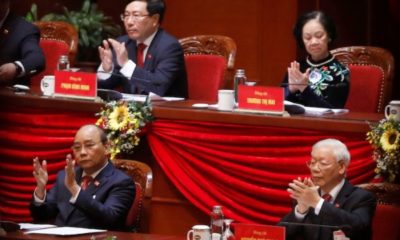
 Politics & Economy4 years ago
Politics & Economy4 years agoVietnam’s unresolved leadership question
-
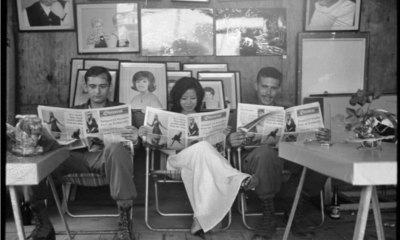
 Politics & Economy2 years ago
Politics & Economy2 years agoRethinking History and News Media in South Vietnam
-
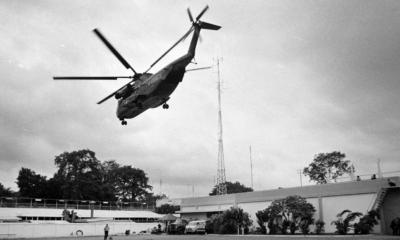
 After 19751 year ago
After 19751 year ago“The Vietnam War Was an Unwinnable War”: On Factuality and Orthodoxy
-

 Society & Culture5 years ago
Society & Culture5 years agoPandemics and Morality: Lessons from Hanoi
-
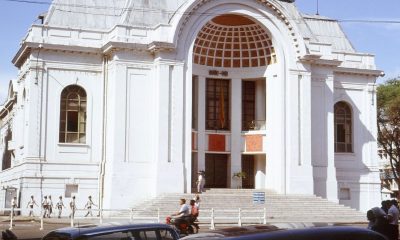
 ARCHIVES5 years ago
ARCHIVES5 years agoDemocracy in action: The 1970 Senatorial elections in the Republic of Vietnam (Part 1)
-
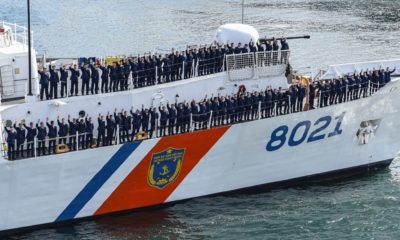
 Politics & Economy4 years ago
Politics & Economy4 years agoThe Limit to U.S.-Vietnam Security Cooperation
-
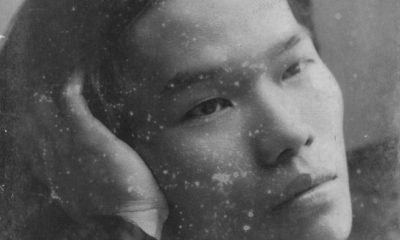
 Politics & Economy5 years ago
Politics & Economy5 years agoNational Shame: How We (Americans) can learn from Nguyễn An Ninh
-
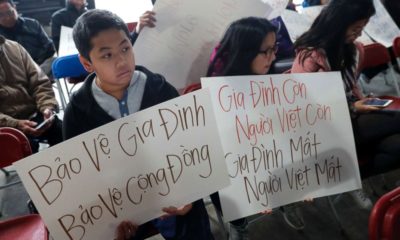
 Vietnamese-America4 years ago
Vietnamese-America4 years agoDeporting Vietnamese Refugees: Politics and Policy from Bush to Biden (Part 1)


